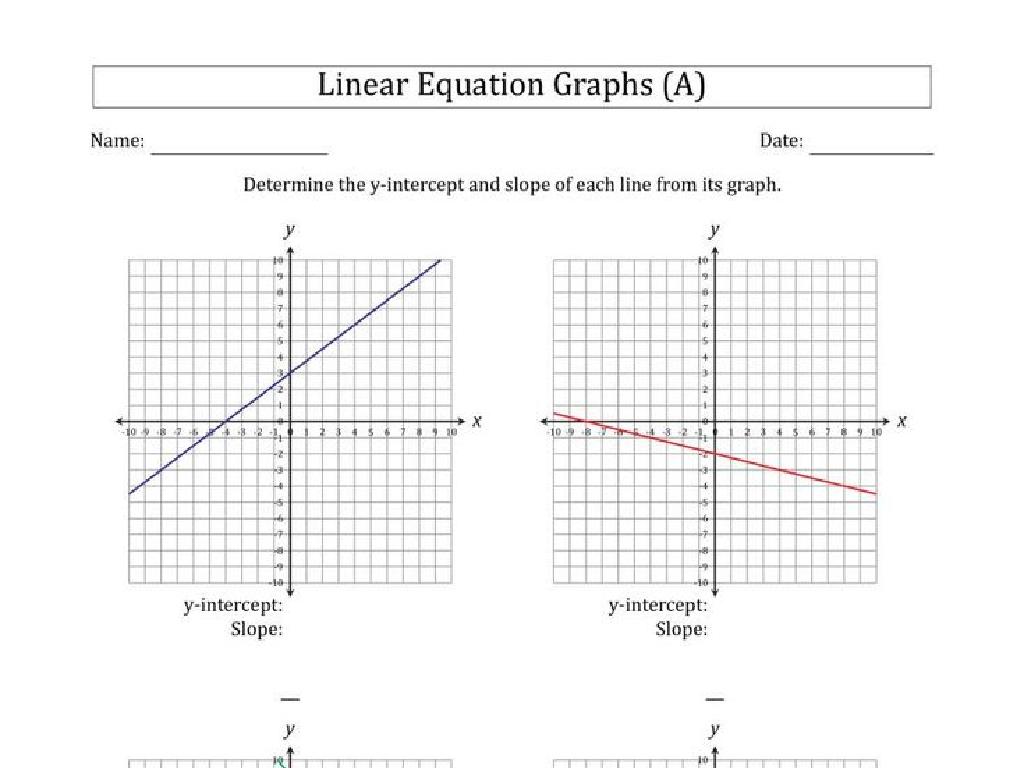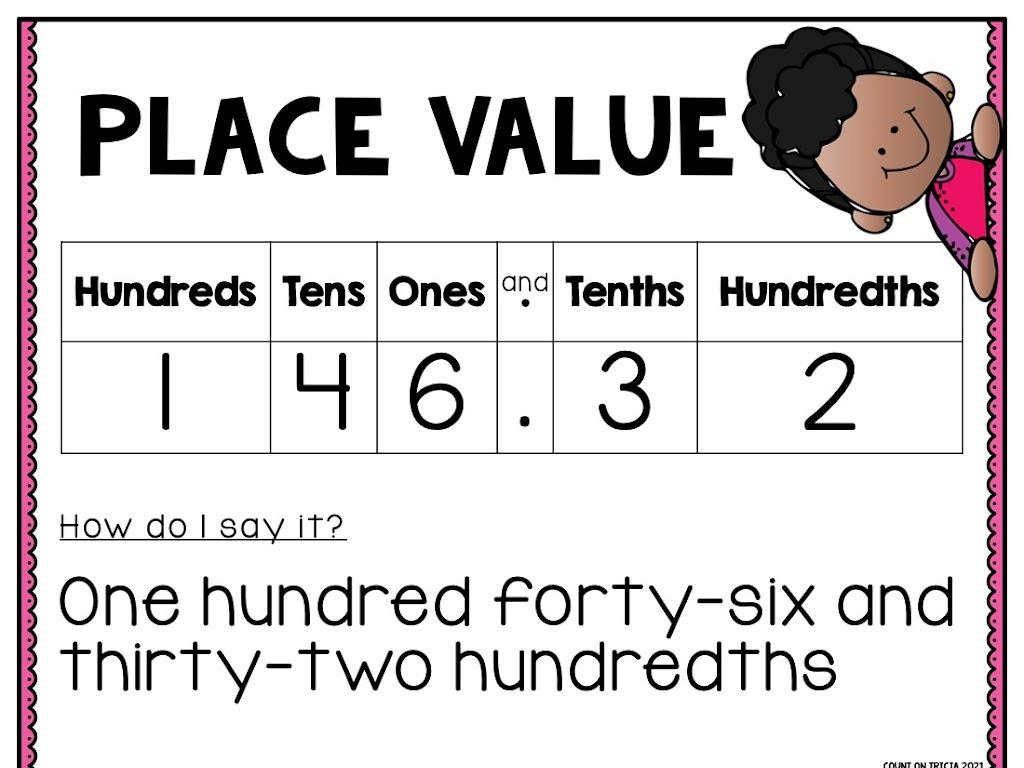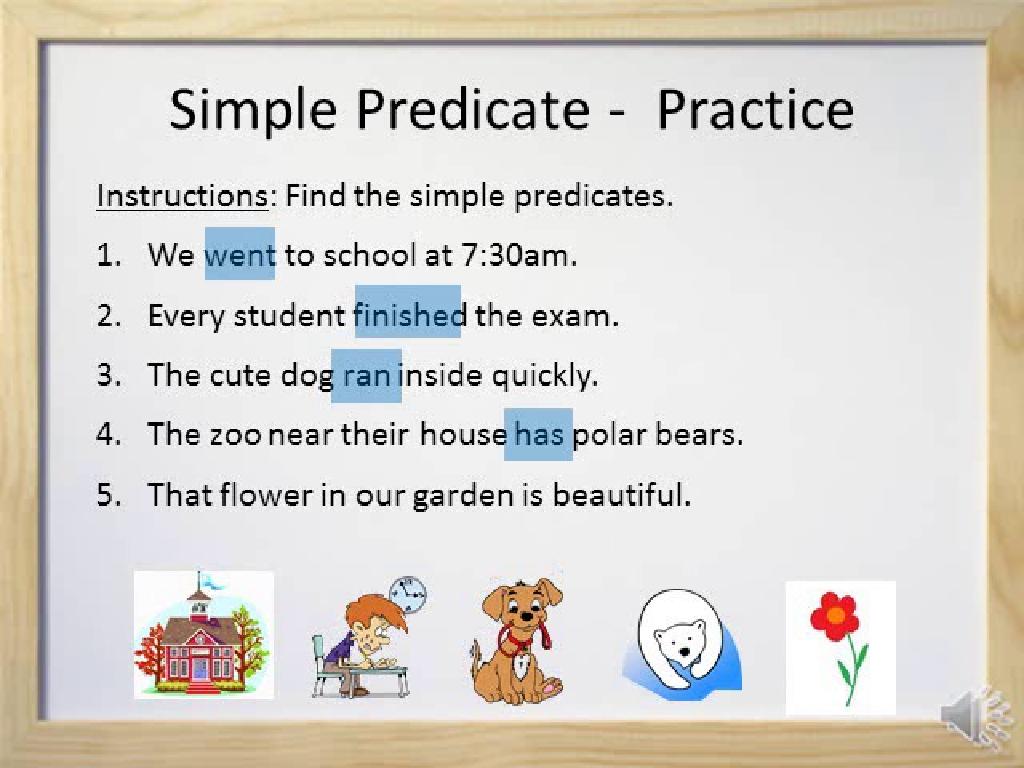One-Step Inequalities: Word Problems
Subject: Math
Grade: Seventh grade
Topic: One-Variable Inequalities
Please LOG IN to download the presentation. Access is available to registered users only.
View More Content
Introduction to One-Step Inequalities
– Understanding inequalities
– An inequality shows how values differ, like x > 7 means x is more than 7.
– Inequalities vs. equations
– Equations show equality (2 + 2 = 4), while inequalities show a range (x > 3).
– Real-life inequality examples
– Budgeting: ‘I must spend less than $50’ or ‘You need at least 8 hours of sleep’.
– Solving one-step inequalities
– To solve, isolate the variable: if 3 + x > 5, then x > 2.
|
This slide introduces the concept of one-step inequalities, which are fundamental in understanding how to represent and solve problems where there is a range of possible solutions. Start by explaining that an inequality is like a statement that one value is larger or smaller than another. Compare this to equations, which state that two values are equal. Use relatable examples like budgeting or time management to illustrate how inequalities are part of everyday decision-making. Finally, demonstrate a simple one-step inequality, showing how to isolate the variable to find the range of possible solutions. Encourage students to think of other real-life scenarios where inequalities apply and to practice solving one-step inequalities with different operations.
Key Terms in One-Step Inequalities
– Understanding ‘>’ and ” means more than, ‘<' means less than.
– Meaning of 'e' and 'd'
– 'e' includes the number, 'd' means up to and including.
– Defining 'solution of an inequality'
– A solution makes the inequality true.
– Applying inequality symbols
– Use symbols to describe real-world situations.
|
This slide introduces the fundamental concepts and symbols used in one-step inequalities. Start by explaining the symbols for greater than (>) and less than (<), and then move on to the symbols that include equality (e and d). Clarify that a solution to an inequality is any value that, when substituted into the inequality, makes the statement true. Emphasize the importance of understanding these symbols as they are the basis for solving word problems involving inequalities. Provide examples such as comparing weights, distances, or amounts to give students a practical understanding of how these symbols are used in everyday contexts.
Writing Inequalities from Word Problems
– Identify keywords in problems
– Look for ‘at least’, ‘no more than’, etc.
– Translate words to inequalities
– Convert phrases into symbols like >, <, e, d
– Example: Inequality from a scenario
– 'Sam has at least $15' means Sam has $15 or more: s e 15
– Practice with real-world problems
|
This slide aims to equip students with the skills to write mathematical inequalities from verbal descriptions found in word problems. Start by identifying keywords that indicate inequality, such as ‘at least’ for e or ‘no more than’ for d. Then, demonstrate how to translate these phrases into mathematical symbols, forming inequalities that represent the scenario. Use an example to illustrate the process, such as translating ‘Sam has at least $15’ into the inequality s e 15. Encourage students to practice with various real-world problems to solidify their understanding. Provide additional examples and common phrases to look for when identifying inequalities in word problems.
Solving One-Step Inequalities
– Solve with addition or subtraction
– If x – 3 > 5, add 3 to both sides to find x
– Solve with multiplication or division
– For 4x < 20, divide both sides by 4 to find x
– Negative numbers reverse inequality
– If you multiply/divide by a negative, flip the inequality sign
– Practice with word problems
|
This slide introduces students to solving one-step inequalities using different operations. Emphasize that addition or subtraction is used when the variable is being decreased or increased by a number. For multiplication or division, it’s when the variable has been multiplied or divided by a number. Highlight the critical rule that multiplying or dividing by a negative number will reverse the inequality sign, which is a common mistake. Provide word problems for students to apply these concepts, ensuring they understand the reasoning behind each step. Encourage them to check their answers by substituting the variable back into the original inequality.
Graphing Inequalities on a Number Line
– Representing inequalities on a line
– Use a number line to show the range of solutions for an inequality
– Open vs. closed circles explained
– Open circle: not included, Closed circle: included in the solution
– Graphing the solution set
– Example: x > 3 is shown by an open circle at 3 and shading to the right
|
This slide introduces students to the concept of graphing inequalities on a number line, which is a visual way to represent the range of possible solutions. Start by explaining how inequalities can be depicted on a number line, with the variable’s possible values being shown as a range. Clarify the difference between open and closed circles: an open circle indicates that the number at that point is not included in the solution set (for ‘greater than’ or ‘less than’), while a closed circle means the number is included (for ‘greater than or equal to’ or ‘less than or equal to’). Provide a clear example, such as graphing x > 3, and demonstrate how to draw an open circle at 3 and shade the line to the right to indicate all numbers greater than 3 are included in the solution. Encourage students to practice with different inequalities and to check their understanding by picking numbers from their graph and substituting them back into the original inequality.
Practice Problems: One-Step Inequalities
– Solve a basic inequality problem
– Example 1: If Sam has > $15, can he buy a game for $18?
– Apply inequalities to real-life
– Example 2: If a bus can hold d 60 people, is it full with 58 passengers?
– Discuss solution methods
– Encourage class participation
|
This slide is aimed at providing students with practical experience in solving one-step inequality word problems. Start with a simple problem to ensure understanding of the basic concepts. Then, move on to a real-life scenario to show the application of inequalities in everyday situations. Encourage students to discuss their solution methods and reasoning. This will help them to understand the process and learn from each other. Make sure to involve the class by asking volunteers to solve the problems on the board or in their notebooks, and then discuss as a class.
Class Activity: Inequality Scavenger Hunt
– Search for real-world inequalities
– Write and solve the inequalities
– For example, find items with a weight limit and express it as an inequality
– Discuss your findings with peers
– Reflect on the application of inequalities
– Think about how inequalities apply in everyday situations
|
This interactive activity is designed to help students recognize and solve one-step inequalities in a real-world context. Students will search the classroom for examples of inequalities, such as the number of books that can fit in a shelf (e.g., x d 30) or the height limit for a ride (e.g., h < 52 inches). They will then write down these inequalities and solve them. Afterward, students will share their findings with the class, fostering a collaborative learning environment. The teacher should circulate to provide guidance and ensure students understand the concept. Possible variations of the activity could include finding inequalities in a textbook, creating word problems based on classroom items, or even extending the hunt to the school at large.
Wrapping Up: One-Step Inequalities
– Recap of solving inequalities
– Why inequalities matter
– Inequalities help solve real-life problems like budgeting or measuring.
– Homework: 5 word problems
– Solve problems using methods learned in class.
– Practice makes perfect
– Consistent practice improves skills.
|
As we conclude today’s lesson on one-step inequalities, it’s crucial to reinforce the methods we’ve learned for solving these types of problems. Understanding inequalities is not just a mathematical skill but a tool for making decisions based on different conditions in real life, such as budgeting money or comparing distances. For homework, students are expected to solve five one-step inequality word problems, applying the techniques discussed in class. This practice will help solidify their comprehension and prepare them for more complex problem-solving. Encourage students to approach each problem methodically, write down their steps, and check their solutions. Remind them that consistent practice is key to mastering mathematical concepts.





